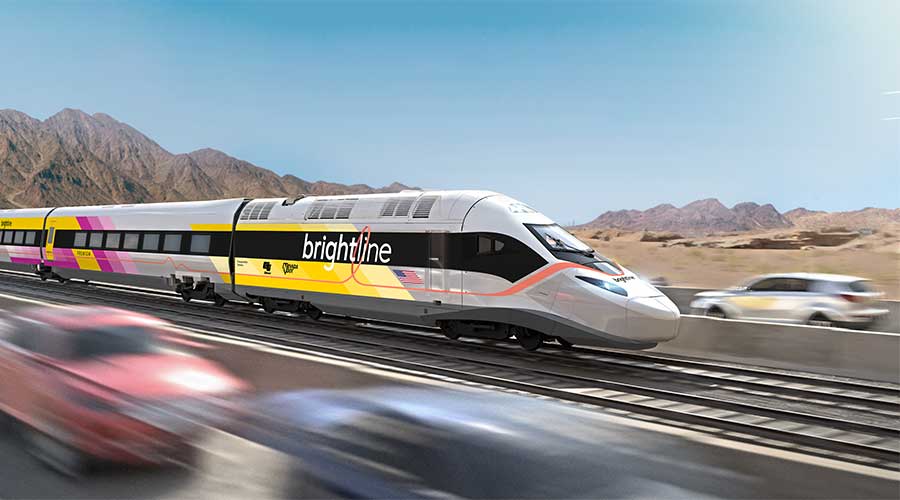Stay updated on news, articles and information for the rail industry
 railPrime
railPrime
April 2015
Rail News: Passenger Rail
Lap of luxury: Rocky Mountaineer amps up lavish amenities to ramp up tourist-train ridership
By Jeff Stagl, Managing Editor
Rocky Mountaineer is marking its silver anniversary in 2015. But the major accomplishment achieved over those 25 years — becoming the world’s largest privately owned luxury tourist train company — doesn’t resonate as much with the western Canada railroad as its more recent successes.
Annual ridership has risen by a double-digit percentage the past three years and the launch of SilverLeaf Service in 2012 enabled the railroad to market additional deluxe amenities. Launched in 1990 by its owner and operator the Armstrong Group, Rocky Mountaineer now offers more than 45 unique Canadian vacation packages and operates along five scenic routes through British Columbia and Alberta between April and October.
Efforts to mold luxury services over the past 25 years have spurred Rocky Mountaineer officials to pursue their ultimate goal: to provide “the most spectacular and unforgettable travel experiences in the world,” according to the railroad’s website.
“We have a world-class product. This is all first class. Travelers and travel agents have voted us as the most luxurious train,” says Powell, referring to the railroad’s eight World Travel Awards, which are considered the “Academy Awards” of the tourism industry.
And Rocky Mountaineer aims to continue providing customers the lap of luxury to help foster business growth. Annual ridership already has ballooned from 7,000 in 1990 to 150,000 in 2014, and likely will continue to increase at a healthy rate the next few years because the railroad plans to continue investing in and improving its services, says Powell.
Six routes through the Canadian Rockies now offer GoldLeaf Service featuring two level, glass-domed coaches with full-length windows, an exclusive dining room, hot gourmet meals and deluxe accommodations; SilverLeaf Service featuring single-level, glass-domed coaches with oversized windows, hot meals served at riders’ seats and overnight accommodations; and RedLeaf Service featuring coaches with large picture windows, breakfast and lunch served at riders’ seats, and overnight accommodations.
The routes include the “First Passage to the West” line between Vancouver, Kamloops, Lake Louise and Banff — the railroad’s most popular route — and a “Coastal Passage” line between Seattle, Vancouver and the Canadian Rockies. Package prices run from about $2,200 per person for a six-day/five-night First Passage trip to about $7,000 per person for a nine-day/eight-night Coastal Passage trip.
Rocky Mountaineer also offers a day-trip route between Whistler and Vancouver that features coaches with large picture windows, a breakfast or afternoon snack, access to an observation car and hosted storytelling, and combined rail tour/Alaskan cruise packages.
The average train trip is about 1,000 miles and some trips involve steep grades because of the route elevations. For example, the Lillooet Subdivision on the Whistler/Quesnel/Jasper route includes the longest 2.2 percent grade in North America.
Rocky Mountaineer currently has 16 dome cars and plans to acquire four new coaches for SilverLeaf Service this year, says Powell. The railroad also expects to maintain that pace of coach acquisitions over the next three years, which “is not an inexpensive investment” in luxury amenities, he says.
For GoldLeaf Service, Rocky Mountaineer is refurbishing coaches that already are considered “world class,” says Powell. The work will focus on employing new rider-comfort technologies, such as electric seats with lumbar and calf supports. Each seat also will feature an electric outlet and USB port for personal devices.
“We will be refurbishing the coaches for three years,” says Powell.
The railroad is banking on the amenity improvements to help push its ridership since 1990 well past the 2 million mark. Rocky Mountaineer logged its 1 millionth rider in 2008.
To attract more riders, the railroad places television, digital and print ads both in North America and abroad, and works with travel trade partners to promote its service. There are tens of thousands of partners who can “tout our experience,” says Powell.
“We want cheerleaders,” he says.
Rocky Mountaineer knows what it’s like to have promoters on its side. In 2010, when Vancouver hosted the Winter Olympics, many attendees rode the railroad’s trains as part of their trips, including journalists from abroad.
“We became more known to the world than before,” says Powell. “It was huge for our awareness.”
The timing of Rocky Mountaineer’s silver anniversary is good because it isn’t occurring in a recession, he says. The railroad can mark the occasion in good business health while Powell & Co. contemplate ways to push the growth envelope even further.
Two years ago, Rocky Mountaineer launched service to Seattle, expanding operations outside of Canada. There are other points in the United States that might be attractive to the railroad, as well, says Powell.
“We are now a North American experience,” he says. “There’s a good possibility we will expand from Seattle in the years to come.”


 2025 MOW Spending Report: Passenger-rail programs
2025 MOW Spending Report: Passenger-rail programs
 Gardner steps down as Amtrak CEO
Gardner steps down as Amtrak CEO
 Guest comment: Oliver Wyman’s David Hunt
Guest comment: Oliver Wyman’s David Hunt
 Women of Influence in Rail eBook
Women of Influence in Rail eBook










